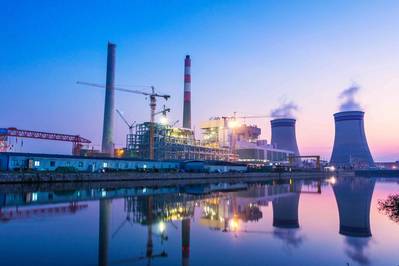Thermal Coal May Offer An Affordable Solution As LNG Prices Rise
Thermal coal may end up as a major beneficiary of escalating hostilities in the Middle East, as the fuel used to generate electricity becomes cheaper than one of its main competitors liquefied natural gas (LNG).
Much of the focus of the potential fallout from the conflict between Israel, and now the United States, and Iran is the threat to crude oil and refined fuels shipped through the Strait of Hormuz.
But all of Qatar's LNG also goes through the narrow waterway separating the gulfs of Persia and Oman, and this amounts to almost 20% of the global seaborne supply of the super-chilled fuel.
While there has yet to be any disruption of Qatar's LNG, the mere threat that Iran may attempt to block the strait or attack shipping has seen spot LNG prices rise in Asia, the biggest market.
LNG for delivery to North Asia LNG-AS rose to $14 per million British thermal units (mmBtu) in the week to June 20, a four-month high and up from $12.6 the prior week.
The weekly price assessment also came before the United States joined Israel's bombing campaign against Iran, with President Donald Trump claiming on June 21 that the strikes had "completely and totally obliterated" three nuclear facilities.
The involvement of the United States makes it more likely that LNG prices will continue to rise to reflect the increased risk premium.
But even at the current level, LNG is no longer competitive against thermal coal in the two major markets where fuel-switching can occur, Japan and South Korea.
ADVANTAGE COAL
The price of Australian thermal coal with an energy content of 6,000 kilocalories per kilogram at Newcastle Port rose to a four-month high of $109.41 a metric ton in the week to June 20, according to data from globalCOAL.
This is the grade of thermal coal most used by Japan and South Korea, as well as Taiwan.
Using LSEG data to convert the price of coal into million British thermal units shows that Australia's Newcastle benchmark is currently around $12.18 per mmBtu, or a 13% discount to the spot LNG price.
The most recent low for spot LNG was in early May when the price dipped to $11 per mmBtu, at which point it was cheaper than Newcastle coal, which was $11.47.
But spot LNG prices have rallied harder than those for coal in recent weeks, a trend that is likely to continue for as long as tensions remain high in the Middle East.
Since it has only been 10 days since Israel started its bombing campaign against Iran it's still too early to see a sustained trend in the volumes of coal being purchased by Japan and South Korea.
However, there are some signs that coal imports are starting to increase, with commodity analysts Kpler tracking Japan's arrivals at 6.57 million tons in June, up from 6.39 million in May.
More interestingly, Kpler is already estimating that Japan's thermal coal imports will jump to 7.23 million tons, which would be the most since March.
It's likely that the July number will be revised higher as more cargoes are assessed.
There is also an element of seasonality to Japan's thermal coal imports, which tend to rise in both the winter and summer peak demand periods.
This means it will be important to look at the year-on-year changes to see if Asia's third-biggest coal buyer is indeed buying more of the fuel.
Japan imported 10.05 million tons of thermal coal in July last year, and given that the volume already assessed for this coming July is more than 70% of that total, it's likely that imports next month will show an increase from July 2024.
It's also worth noting that Asia's two biggest coal importers, China and India, don't have much ability to swap LNG for coal given their limited use of natural gas for power generation.
But on a longer-term note, both countries are likely to view the current unrest in the Middle East as another compelling reason to reduce dependency on imported crude oil and LNG as rapidly as possible.
If that means using their vast domestic reserves of coal, supplemented by imports, to electrify transportation at a faster pace, it's likely that this is a path they will pursue irrespective of climate change concerns.
Enjoying this column? Check out Reuters Open Interest (ROI), your essential new source for global financial commentary. ROI delivers thought-provoking, data-driven analysis of everything from swap rates to soybeans. Markets are moving faster than ever. ROI can help you keep up. Follow ROI on LinkedIn and X.
The views expressed here are those of the author, a columnist for Reuters.
Map of Strait of Hormuz https://tmsnrt.rs/4k1qmgY
(Reuters)




